What Is The Best Wood For Fireplaces? 9 Ideas (With Pictures)
-
Pete Ortiz
- Last updated:

Fireplaces are a popular feature of many homes. There is nothing quite like snuggling in for a cozy night on the couch next to a roaring fire when it is cold and dark outside. Getting that perfect fire is as much about choosing the right wood as it is about building the fire itself. Not all firewood is created equal.
What is the best wood to use in your fireplace? Many types of wood burn better than others, and not everything can be put into the fireplace and be burned. Here are the nine best types of wood for fireplaces.
The 9 Best Woods for Fireplaces
1. Oak
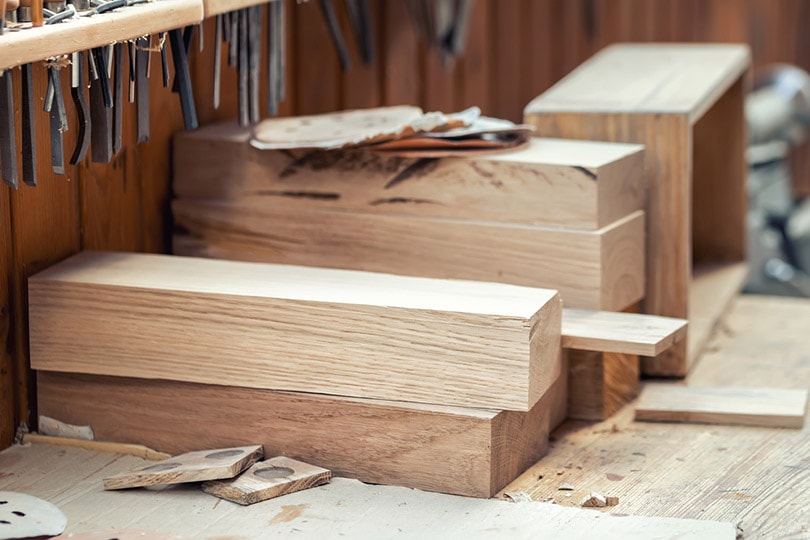
| Heat rating: | High |
| Type: | Hardwood |
Oak is by far the best firewood to use in a fireplace. It can be easily found, gives out a lot of heat, and produces very little ash. Both varieties of oak, red and white, have equally good properties for burning. However, the strength and weight of the wood make it harder to split and move than some other types of wood. It can also be tricky to light. If the oak does not get a good smolder going, it has a chance to go out, requiring you to relight it.
If you are looking to get a long-lasting fire that warms the home for hours at a time, there is no better wood than oak.
- Widely available
- Burns for a long time
- Tons of heat
- Heavy
- Hard to split
2. Ash
| Heat rating: | High |
| Type: | Hardwood |
Ash has the benefit of being easy to split and easy to move. The trees tend to have a very low moisture content, so the wood does not need extensive drying time and is easier to work with than some other hardwoods than oak. Ash also burns very cleanly. It has little water and little sap to hinder a nice smooth burning session. While not as popular as oak, ash has a lot of benefits that make it the nearly perfect home firewood.
- Easy to split
- Low moisture
- Clean burn
- Won’t burn as long as oak
- Not widely available
3. Beech
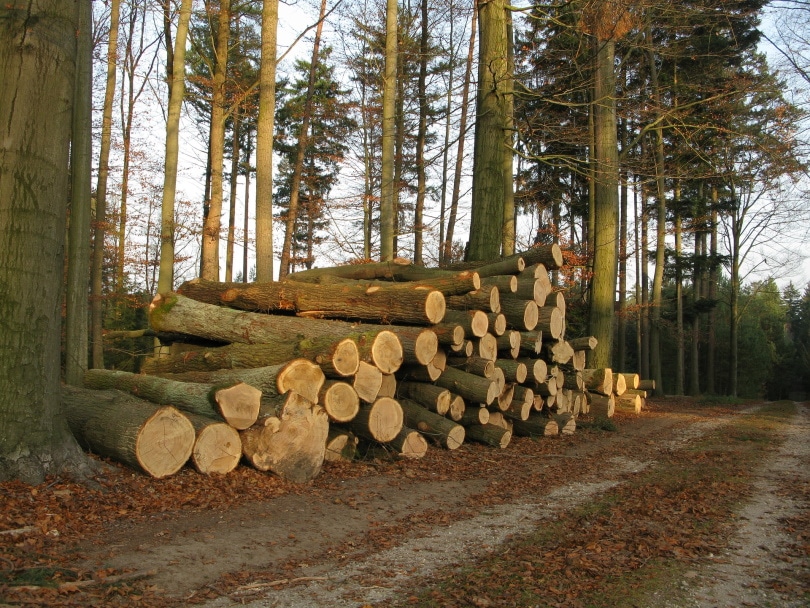
| Heat rating: | High |
| Type: | Hardwood |
Beech puts out a lot of heat. One log of beech wood will put out roughly twice the amount of heat energy than a typical softwood log. If you are looking for a log that will burn cleanly and last all night, then beech is going to be high on your list. But beech is constrained by geographic location. Reliable sources of beech wood are not available everywhere, so if you cannot find it, it likely is not available near you.
- Tons of heat
- Clean burn
- Not widely available
4. Birch
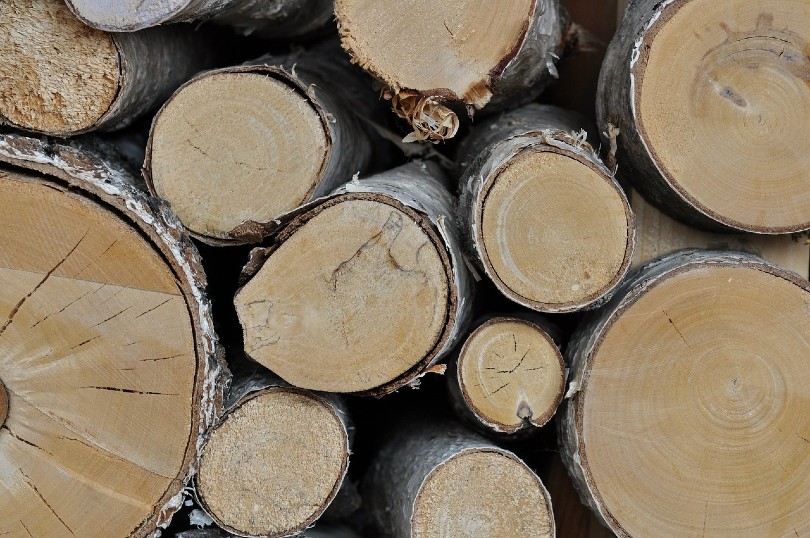
| Heat rating: | High |
| Type: | Hardwood |
Birch is a great wood for small fires. The narrow diameter of the tree means that birch logs are often much smaller than other hardwood logs, but they burn just as well. Birch can easily be used as large kindling or as small logs for a short fire. Due to the small size of many birch logs, it does not require much drying or seasoning to become the perfect wood for your winter fire. If you are looking to have a longer fire, birch is a great addition to help other hardwoods burn more quickly. Just watch out for bark, bark can hinder the log’s ability to light, and birch is quite barky.
- Small diameters
- Low moisture content
- Lots of bark
5. Hickory
| Heat rating: | High |
| Type: | Hardwood |
Hickory is great for creating aromatic fires. The smell of hickory smoke is one of the most iconic smells, and as soon as it hits your nose, you will recognize it. But hickory tends to be expensive since it is also widely used as wood for cooking. Hickory also comes in large logs that sometimes require it to be cut down to a more appropriate size for a home fireplace. But once the log is prepared properly, it will produce a hot fire that smells delicious.
- Smells amazing
- Burns hot
- Expensive
- Large logs
6. Maple

| Heat rating: | Medium-High |
| Type: | Hardwood |
Maple is only widely available in the northern United States and Canada, but it has very similar burning qualities to oak. If available, maple makes for a great fireplace log due to its high heat and slow burn time. Some species of maple burn at a lower temperature than other hardwoods and produce less heat but will still burn hotter than most softwoods.
- Similar to oak
- Long burn time
- Good heat
- Not widely available
7. Pine
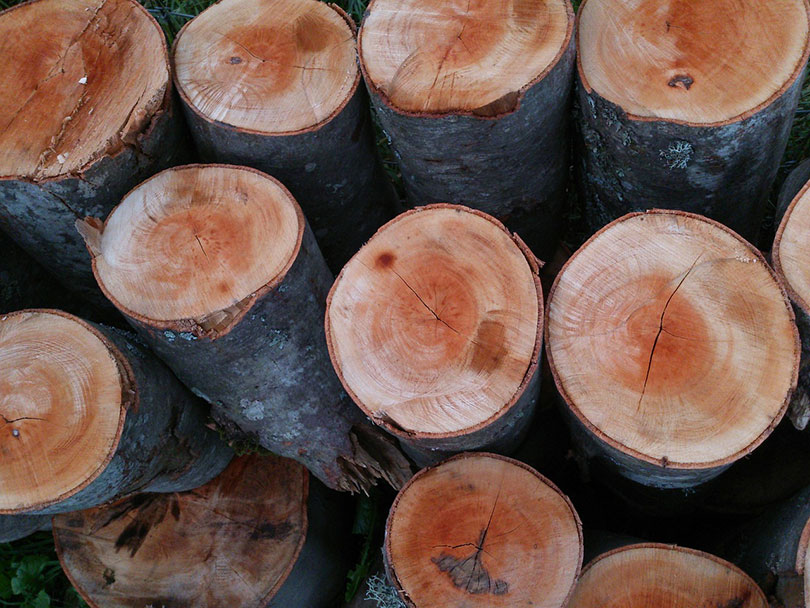
| Heat rating: | Low |
| Type: | Softwood |
In many parts of North America, pine is the easiest type of wood to find. Some say that pine is not a great wood for a fireplace since it burns quickly, doesn’t put out a lot of heat, and creates ash but it is a wood that has been used for fires for centuries. In some places, like the southern United States, it is one of the only kinds of wood that is easily obtainable year-round. Pine is also very easy to gather and split if you are doing the work yourself.
If pine is what is available, do not worry about putting it in your fireplace. You might just have a bit more of a mess to clean up afterward than established hardwood logs.
- Affordable
- Widely available
- Easy to split
- Low temperature
- Burns quickly
- Lots of ash
8. Douglas Fir
| Heat rating: | Medium |
| Type: | Softwood |
Douglas fir is similar to pine. It is one of the most common types of softwoods in the world, making fir logs easy to obtain during the winter. Douglas fir has the benefit of burning at a slightly higher temperature than pine and lasting a bit longer in the grate while still retaining the competitive price. However, Douglas fir tends to have a lot of sap which gives that familiar crackle but can also affect the quality of the fire over time. Douglas fir is a widely available, easy-to-use firewood for any home fireplace.
- Affordable
- Easy to obtain
- Burns hotter than other softwoods
- Sappy
- Burns quickly
9. Eco Logs

| Heat rating: | Low |
| Type: | Recycled wood |
Eco logs are a relatively new invention that shows up on store shelves during the winter. These logs are made from recycled wood and paper and are specifically designed to be burned in a home fireplace. They are cheap and good for the environment. However, they tend to burn quickly and at a relatively low temperature. If you are having a hard time finding high-quality hardwood or have qualms about cutting down trees for firewood, then eco logs could be a great choice. The biggest downside is that eco logs create a lot of ash that needs to be cleaned up after use due to the high amount of paper per log.
- Affordable
- Easy to find
- Good for the environment
- Burns at a low temperature
- Burns quickly
- Creates a lot of ash
What Wood Should Never Be Burned Inside?
While all the wood on this list can be safely used for fireplaces, there are some types of wood that absolutely should not be burned. You should never burn driftwood, wood scraps, plywood, or wood with nails or screws in it. These kinds of wood are dangerous to burn indoors.
Driftwood can release toxic fumes due to the sea salt and other coatings that it picked up in the ocean. Similarly, plywood has a lot of glue and chemicals in it that can be harmful when burned in a poorly ventilated area. Wood scraps and reused wood that has nails and screws can harm a person trying to clean out a fireplace after the fact. The metal can heat up and burn people or melt into jagged shards that hide inside the ash.
Softwood vs. Hardwood
There are some people who say you should never burn softwood inside, but it is not that simple. Not everyone has access to hardwoods all the time. Softwood burns very quickly and produces a lot of ash. Ash can build up in the grate and in the chimney, clogging up your beautiful fireplace, and requiring a lot of cleaning to maintain properly. However, softwood dries and seasons much faster than hardwood and is sometimes the only option for some people.
Hardwoods burn better but are harder to light. They also require a lot of seasoning. Some hardwoods can take up to a year to be dry enough to burn effectively in a fireplace. Burning hardwood that is still wet produces a ton of smoke and not a lot of light.
It is preferable to burn hardwoods when possible, but if the need arises, softwoods can be used as well. The most common types of softwoods for burning are pine and fir, while the most common kinds of hardwoods are oak and maple.
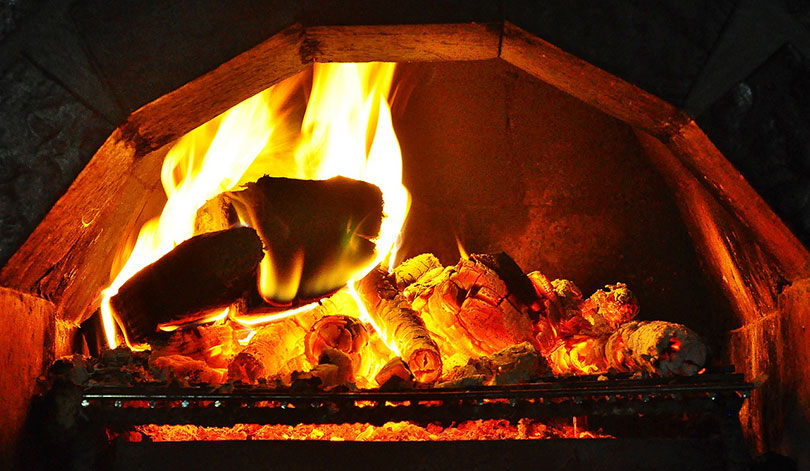
Can I Burn Wet Wood?
Technically, yes, but it is going to be a struggle. Burning wet, or green as it is called, wood is difficult. It is hard to light. Even once the logs get going, the fire is going to strain itself, trying to get through pockets of moisture. This will create a lot of smoke in the process. If you are looking to have a fire for pleasure purposes, you should not burn wet wood. But if you absolutely have to, for warmth, you can try. It just won’t be easy or pleasant.
Tips For Getting Your Fire Started
If you are struggling to get your beautiful log started in your fireplace, there are a few things to take into consideration. First, you need to use kindling. Kindling comes in many shapes and sizes, and it is a good idea to use fine kindling and large kindling in conjunction with your log.
If that does not work, make sure that the flue is open and that the fireplace is getting enough airflow. Fires will not burn unless it has a channel of air going to it. Lastly, be sure that the grate and chimney are clean and clear of debris. Kindling and airflow are the two most important conditions for a healthy indoor fire.
Conclusion
All the woods we have covered here are great for indoor fireplaces. Objectively, oak is probably the best and safest choice. If oak is available at an affordable price near you, it should be the primary source of fuel for your fireplace. But there are many other kinds of wood growing all over the world that are just as good in many situations. Find what is available near you and take these tips into consideration, and you will have a winter full of beautiful roaring fires to cozy up next to.
Featured Image Credit: joseclaudioguima, Pixabay
Contents



